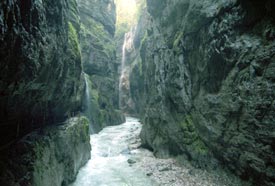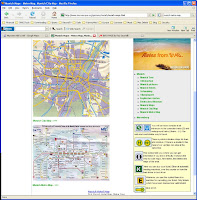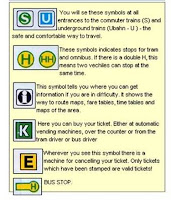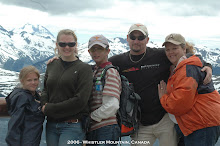Getting up and down "The Zugspitze": If you're without a car, you can buy a roundtrip ticket from Garmisch. Take the Zahnradbahn to Eibsee and switch to the Eibsee-Seilbahn cable car. For the return trip, descend via the Gletscherbahn cable car to the cogwheel railroad's mountain station at Zugspitzplatt, where you'll board the train for Garmisch. Zahnradbahn. The meter-gauge rack railway begins in Garmisch, next to the railroad station, and travels along the valley to Grainau and on to Eibsee before ascending the Zugspitze under cogwheel power. At the Zugspitzplatt or Zugspitze Glacier Plateau, 2600 meters up the 2964m mountain, you switch to the Gletscherbahn aerial cablecar for a quick ascent to the summit ridge. Total travel time is 75 minutes from Garmisch, 60 minutes from Grainau, or 35 minutes from Eibsee. For more information on Zugspitze transportation (including wheelchair access), check the summer and winter timetables at Zugspitze.de, which is operated by the Bayerische Zugspitzbahn.For the weather and live cams click here. The Zugspitze is easily conquered nowadays by rack railway from Garmisch. There's also the option of taking the cable car from Erwald past the imposing West Wall, or the Eibsee cable railway from Grainau at Lake Eibsee.
The Zugspitze region is a pure delight for any nature enthusiast with its four valley landscapes, the Ammergau Alps, the "blue region", the Karwendel Alpine region and the area around the Zugspitze. On Germany's highest mountain - the Zugspitze (2,963 m) - it feels like you could reach out and touch the stars. And right on top of the mountain, you are not only at the highest point in Germany, but also almost on its very edge; the Zugspitze is on the German-Austrian border. But you don't have to be an experienced mountain climber to explore these truly spectacular peaks. There are mountain railways and cable cars to make the ascent a little easier.
The Eibsee-Zugspitze high-wire park has a breathtakingly high course with a number of different climbing activities. The Garmisch-Partenkirchen airfield offers a range of paragliding, tandem flying and thermic flying tours over the mountain peaks. A walk through the wild, romantic Höllental (hell valley) gorge or the impressive Partnach gorge is an experience for all the senses. This is one of the most beautiful gorges in the Alpine region and a fascinating natural attraction at any time of year, but particularly in the winter. A dinghy or kayak tour on the river Loisach also lets you indulge your taste for adventure. The Karwendel Alpine region between Mittenwald, Krün and Wallgau is one of the largest ranges in the Northern Calcareous Alps. With its unspoilt terrain and numerous peaks, it presents a fantastic challenge to any avid mountain climber, while the enchanting elevated valley at the foot of the Karwendel mountain is an ideal destination for action-packed holidays close to nature. The "Via Alpina", a long-distance cross-border footpath with five sections running through the whole of the Alps, also crosses the Karwendel mountains. If you are looking for a blend of tradition and modern-day attractions, sport, fun, zest for life and enchanting Alpine scenery, this is the destination for you.
SummerCamp: A huge halfpipe, perfect deep-snow slopes and a fun park raise the adrenalin levels of snowboarders and free-skiers at Gap 1328 SummerCamp. Another highlight is Germany's biggest open-air jacuzzi on Zugspitze mountain, the perfect place to chill out and relax. The SummerCamp parties are also legendary.
View from the top of GermanyZugspitze -- the highest point in Germany. Standing on this 9,700-foot peak, you can't help but marvel at the thought that you are above everyone else in the entire country -- No. 1 out of 82 million. From here, facing south, I feel like a maestro conducting a symphony of snow-capped peaks, as the mighty Alps stretch seemingly forever to the right and left. The Zugspitze also marks the border between Germany and Austria. Before Europe united, you had to show your passport just to walk across the mountaintop. Lifts from both countries meet at the top. As if waging an epic battle of alpine engineering, just a few years after the Austrians built a cable car to their Zugspitze station, the Germans drilled through the mountain in 1931 so that a cogwheel train could deposit nature lovers on a glacier just below their side of the summit. Today, whether you ascend from the Austrian or German side, you can straddle the border between two great nations while enjoying an incredible view. Restaurants, shops and telescopes await you at the summit. There are two separate terraces -- Bavarian and Tirolian -- connected by a narrow walk, which was the border station. Crossing used to be a big deal -- you'd get your passport stamped at the little blue house and shift your currency from shillings to marks. While the border formalities are long gone, regional pride still shines here. You'll notice no German or Austrian banners -- "Freistaat Bayern" and "Land Tirol" -- only regional ones. The views are equally breathtaking on either side of the border. On the German side, the Zugspitzplatt Glacier stretches before you. Ski lifts fan out as if reaching for the ridge that defines the border between Germany and Austria. Each summer, workers spread out a 10,500-square-foot reflector over the glacier to try to slow its shrinking due to global warming. Since metal ski lift towers absorb heat, they too are wrapped in reflective material to try to save the ice. Below you in the snow stands the "Hochzeitskapelle" wedding chapel, which was consecrated in 1981 by Cardinal Joseph Ratzinger (the present Pope Benedict XVI). The German side has the oldest building up here -- the rustic, tin-and-wood weather tower, erected by the Deutscher Wetterdienst (German weather service) in 1900. The first mountaineers' hut was built in 1897 but didn't last. The existing one -- entwined with mighty cables that cinch it down -- dates from 1914. In 1985, observers clocked 200 mph winds up here -- those cables were necessary. Step inside the German restaurant to enjoy museum-like photos and paintings on the walls -- including a look at the priest and his friends who, in 1851, hiked up with a golden cross and planted it on the summit. The German side still features a golden cross that marks the highest point in the country, but the historic original was shot up by Americans soldiers who used it for target practice in the late 1940s. What you see today is a modern replacement. World War II left its mark on the summit as well. The Austrian side was higher until the Germans blew its top off during the war to make a flak tower that targeted Allied airplanes. Both Germany and Austria use this rocky pinnacle for communication purposes. The square box on the Tirolean Terrace provides data for Innsbruck airport's air traffic control system. A tower nearby is for the Katastrophenfunk (civil defense network), harkening back to the stressful years of the Cold War. The Austrian station (which is much more visitor-friendly than the German one) has a fine little museum that tells the story of how the Zugspitze was first climbed in 1820. The museum also includes three interesting videos: a six-minute, 3-D mountain show; a 30-minute, making-of-the-lift show; and a 45-minute look at nature, sport and culture of the region. Looking down the valley from the Tirolean Terrace, you can see the Austrian towns of Erwald and Lermoos in the distance and the valley that leads to Reutte. In the summer, it's easy to actually "summit" the Zugspitze as there are steps and handholds all they way to the cross. Or you can just feed the birds from the lounge chairs of "the highest beer garden in Germany." The yellow-beak ravens -- who get chummy with anyone who shares some pretzels -- seem to enjoy the views here as much as the humans. While the Germans glory in the Zugspitze, their nation's highest point, their neighbors are less impressed. There are many higher mountains in Austria.
A golden cross marks the top of the Zugspitze -- the highest point in Germany.Rick Steves writes European travel guidebooks and hosts travel shows on public television and public radio. E-mail him at rick@ricksteves.com, or write to him c/o P.O. Box 2009, Edmonds, Wash. 98020.
Copyright 2007 RICK STEVES, DISTRIBUTED BY TRIBUNE MEDIA SERVICES, INC.





